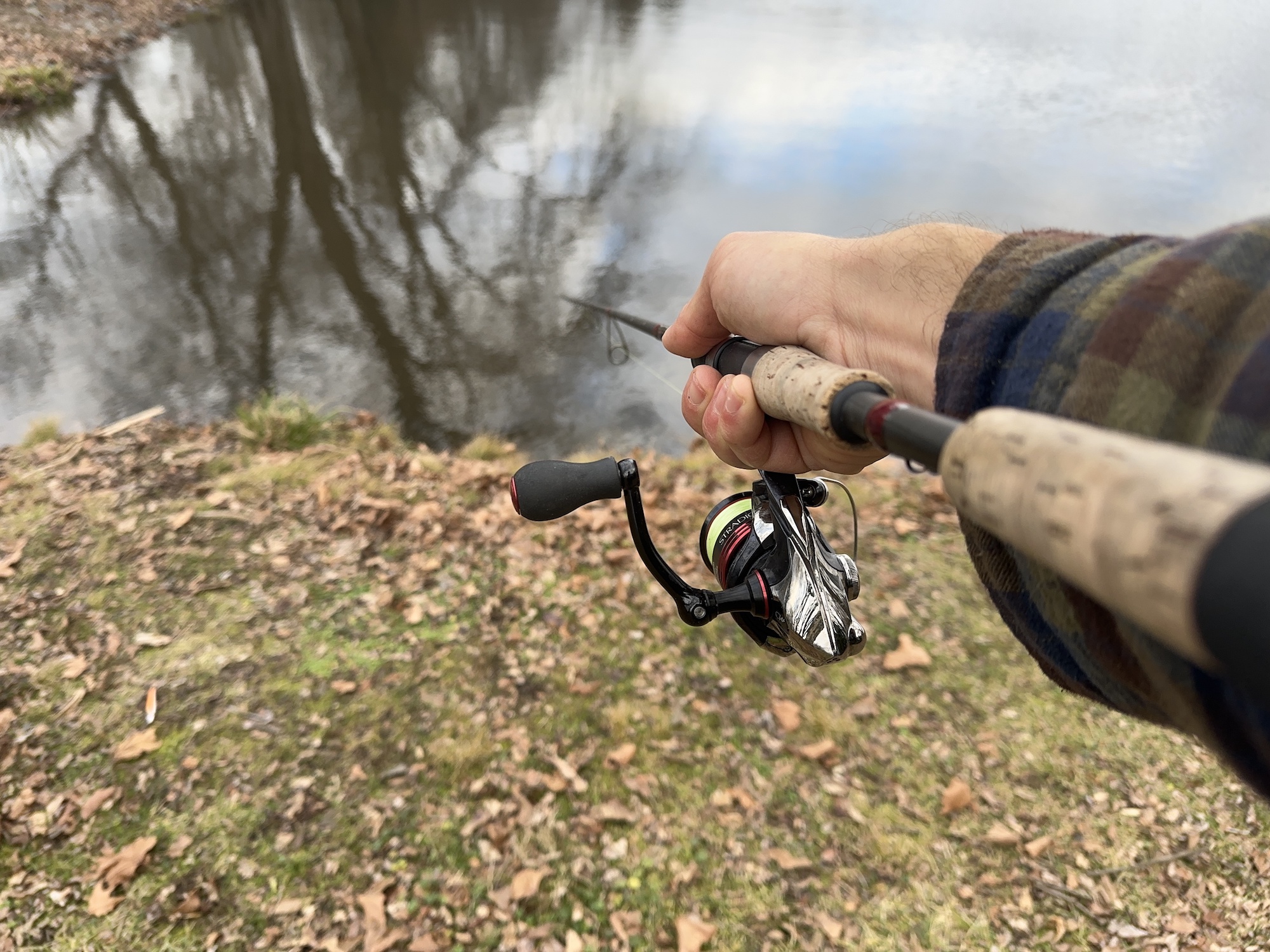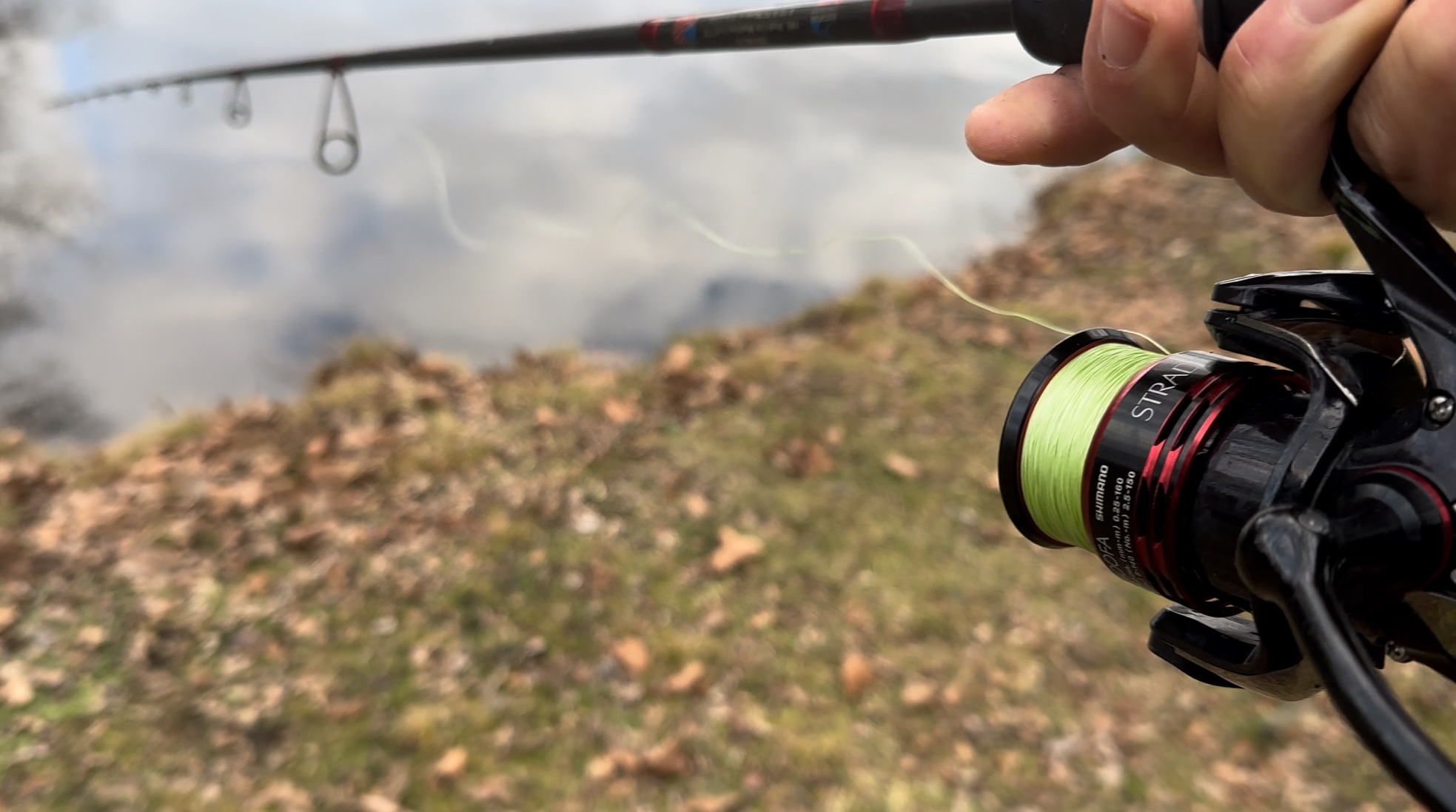This simple maneuver can save expensive baits from watery graves

A hard bait snagged on an underwater log. Joe Cermele
Good lures aren’t cheap anymore. Serious anglers understand the value of high-end hooks, sturdy hardware, lasting finishes, and specific actions that discount lures often can’t match. I use quality lures and I’m sure many of you do, too. I’m also certain that, like me, you wince whenever you lose one, whether it’s a $15 jerkbait or a jighead from a pack of four that cost almost as much as the jerkbait itself.
Learning how to unsnag lures will save you cash and heartache. But let’s get one thing straight: Despite all the doodads, gizmos, and tricks designed to get your hopelessly stuck lure unstuck, none of them work 100 percent of the time. And believe me, I’ve tried them all, from the weighted variety that’s supposed to slide down your line and knock the lure free to the fancy ones with chains and retractors. I’ve always gotten a good smirk out of the slide weights, because you always get more than one in a pack, which should tell you that they’re not immune to getting stuck down there with your lure.
The trick that’s worked best for me over the years doesn’t involve a third party apparatus. It’s a quick maneuver I learned from an old fishing mentor when I was a teenager. I’ve always called it the “trigger method,” and while—like I said—nothing works all the time, I’ve had more success getting stuck lures back with this method than with any other. But before I explain this simple technique, we must start with the most critical step, which involves only your mind.
Prep For Success
Whether your lure gets hung up in a piece of wood, wedged between rocks, or entangled in a gob of line some careless angler tossed in the lake, our first instinct is to pull back hard on the rod to free the bait. After yanking away with all our might, then we’ll root through our tackle bags for that lure retrieving doohickey or try a more calculated approach. But to up your odds of success with the trigger pull method, you do not want to resort to it after you’ve just spent ten minutes yanking away to no avail. You want it to be your first move as soon as you get hung up.
I understand that brute force can free a lure sometimes, but it can also make a barely stuck lure become a severely stuck lure, especially when you’re in softer material like wood or weeds. Likewise, if you’re jammed in the rocks, pulling forward can cause the lure to just wedge in deeper. All this force can also bend hooks, break lips, and twist hardware, which means the lure you get back might not be ready to recast anyways.
Even when you set the hook hard on a snag you thought was a fish—which we’ve all done—do not keep pulling. If you can remember this, the trigger method might save the day.
Use the Trigger Method
Step 1
The trigger method works with spinning or baitcasting outfits, though the design of a spinning reel makes it a little easier to execute. As soon as you get snagged, step one is simply reeling in any slack. You want the line taut to the lure, but don’t apply any strong pressure.
Step 2

With a spinning reel, gather the line with your index finger as you would when making a cast. Next, open the bail. If you’re using a baitcasting outfit, click the reel into free spool and thumb the spool with enough pressure that the line can’t pay out.
Step 3

Pull the rod backwards as far as you can to draw the line tight. But do this slowly, not fast with a lot of force. If you’re fishing from shore, you might even take a few steps backward to achieve the best pressure. Just make sure you’re not pulling back so hard that the line snaps. Think of this step like drawing a bow.
Step 4

With the rod pointed directly at the snag, you want to release the pressure on the line suddenly and swiftly. If you’re using a spinning reel, simply let go with the finger holding the line. With a baitcaster, ease the tension on your thumb so the spool can feed line. It can be a little tricky, but you want to maintain just enough contact to avoid a bird’s nest (though dealing with a tangle will be worth it if you get your $20 hard bait back).
Why it Works
The idea with this method is that the quick jolt of slack down the line will transfer all the way to the stuck lure. The forward pressure created while drawing back your line will put forward tension on the lure, and assuming you drew the rod back slowly, it shouldn’t bury hooks or wedge the lure more deeply. When that tension is broken, the lure will hopefully get just enough of a pop that it can free itself.
Here’s another method for unsnagging a lure using the exact same principle, but be careful not to put too much pressure on your rod tip while doing this:
So throw those nice lures into cover and know that you can (probably) free them when snagged. Just don’t bury the hook when they first get hung up.
